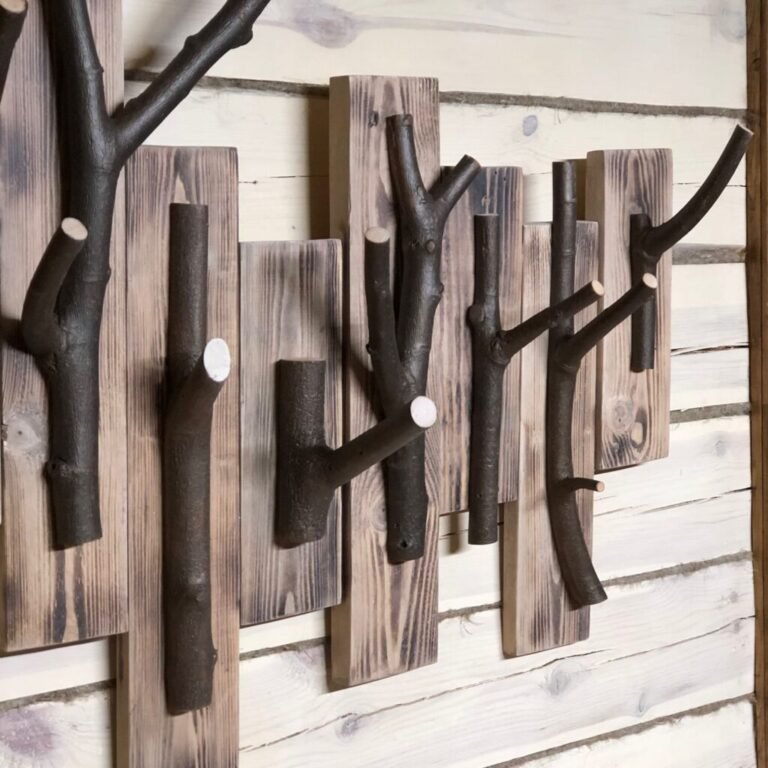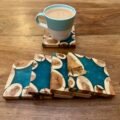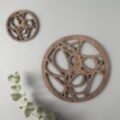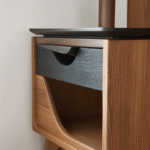Coffee and Sawdust: The Tale of Captain Eddie Woodworking
So, there I was, sitting on my back porch with a steaming cup of black coffee, the kind that kicks you right in the gut on a crisp morning. The sun was just peeking over the trees, and the faint smell of fresh-cut pine wafted through the air. You know the smell I’m talking about, right? It’s that sweet, warm aroma that gets your heart racing just a little bit more when you’re about to dive into a new project.
Anyway, there’s this little woodworking hobby of mine I like to call Captain Eddie Woodworking. Got the name from my great-uncle Ed, who always fancied himself something of a naval captain, even when he was really just a guy who liked to craft little trinkets out of scrap wood. I can still hear his deep voice booming, "Wood speaks to me, boy!" and, man, did he have the biggest collection of tools you’d ever lay your eyes on.
The Great Bookshelf Fiasco
Not long ago, I thought I’d honor Uncle Ed by finally tackling a big project—a bookshelf. Simple, right? Well, that’s what I told myself before I started taking measurements, which honestly was more of a guess than a science. I ended up with this jigsaw puzzle of a plan that, if you squinted hard enough, looked like a bookshelf. So, I head down to the local lumber yard, which smells like sawdust and dreams—an intoxicating mix, really. I picked out some solid pine. Beautiful stuff. Smoothed edges, golden hue, smells like home.
Now, this is where things started going sideways. You ever have that moment when you’re milling the wood, and everything seems to come together, but there’s just this nagging feeling at the back of your mind? The sound of the table saw ripping through the wood was like music, and I could almost hear Uncle Ed cheering me on, but I didn’t double-check my measurements. Big mistake, trust me.
I was too caught up in the rhythm. I mean, there I was, the saw humming and the wood shavings piling up like little trophies on the floor. Then, when I went to put the first pieces together, it hit me like a ton of bricks. The sides were too tall and the shelves… well, let’s just say, they weren’t exactly shelf-sized. Talk about a facepalm moment. It was like I had done the math in my head during the ride home, but it hadn’t quite translated to reality.
Almost Gave Up
At that point, I almost threw in the towel. I mean, who were we kidding? I’d spent a whole Saturday working on this thing, and I could almost hear Uncle Ed’s disappointed chuckle. “You gotta pay attention,” he’d say, the twinkle in his eye revealing his own struggles from years past. I took a deep breath, pushed through the frustration, and remembered that it isn’t about how polished the project is; it’s about the process and learning from the blunders.
So, I took a couple of days to let it marinate in my head, which is just a fancy way of saying I fumed over it as I sipped more coffee. Then it hit me like an epiphany straight out of the blue—what if I embraced the imperfection? Instead of scrapping my hard work, I could just call it industrial style or whatever folks are calling it these days.
Turning Mistakes into Character
Fast forward a few days later, when I pulled out some wood glue, screws, and a hunk of wood leftover from some other project. I fashioned a couple of brackets to hold the shelves in place. You should’ve seen me working that drill, sweating bullets, hoping this jerry-rigged solution would hold. There’s something deeply satisfying about hearing that sound of wood being pierced, but boy, did I feel the weight of my previous mistakes.
And guess what? It actually worked! I laughed when it came together. I stepped back, hands on my hips, and admired my “unique” masterpiece. Sure, it wasn’t perfect in the conventional sense—one shelf didn’t quite align. But hey, it’s got stories, you know? The character that comes from making mistakes is worth way more than achieving some pristine version shown in glossy magazines.
The Final Touches
Even after all that trial and error, I couldn’t help but add some personal touches. I got into my collection of old books, some that Uncle Ed used to read to me, dusted off the covers, and arranged them on the newly built shelves like they belonged there. As I did that, the whole thing transformed, radiating warmth. It no longer felt like just a project; it became a part of my legacy to keep Uncle Ed’s spirit alive.
You should have seen how proud I was when my neighbors came over for coffee one evening and spotted the bookshelf. “Hey, I like that, looks great!” was the general consensus, which just made my day. Honestly, I didn’t care if it was perfectly aligned or if the wood grain flowed seamlessly; I had built it, flaws and all.
A Warm Takeaway
So, if you’re out there thinking of diving into woodworking, or any craft for that matter, just give it a go. Embrace the messiness of it all—every mistake you make is a stepping stone to something beautiful. Woodworking might seem intimidating, but trust me; when it all comes together—however imperfectly—it’s one heck of a rewarding feeling.
Life’s too short to sweat the small stuff, and sometimes, the best stories come from trying, failing, and getting back up again. Just take a deep breath, grab some good wood, and let that saw sing. You won’t regret it.










